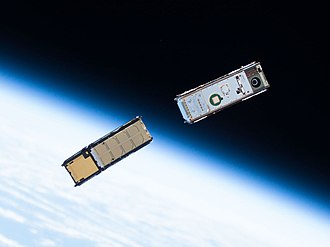Mental health
A 2008 Cochrane systematic review found that limited data is available. In the one eligible study, omega-3s were an effective adjunctive therapy for depressive but not manic symptoms in bipolar disorder. The authors found an "acute need" for more randomised controlled trials.[43]
A 2009 metastudy found that patients taking omega-3 supplements with a higher EPA:DHA ratio experienced fewer depressive symptoms. The studies provided evidence that EPA may be more efficacious than DHA in treating depression. However, this metastudy concluded that due to the identified limitations of the included studies, larger, randomized trials are needed to confirm these findings.[44]
In a 2011 meta-analysis of PubMed articles about fish oil and depression from 1965 to 2010, researchers found that "nearly all of the treatment efficacy observed in the published literature may be attributable to publication bias."[45]
A 2014 meta-analysis of eleven trials conducted respectively on patients with a DSM-defined diagnosis of major depressive disorder (MDD) and of eight trials with patients with depressive symptomatology but no diagnosis of MDD demonstrated significant clinical benefit of omega-3 PUFA treatment compared to placebo. The study concluded that: "The use of omega-3 PUFA is effective in patients with diagnosis of MDD and on depressive patients without diagnosis of MDD."[46]
Antidepressant
A 2019 meta-analysis concluded that EPA ≥ 60% at a dosage of ≤1 g/d may have antidepressant effect.[47]
Alzheimer's disease
A Cochrane meta-analysis published in June 2012 found no significant protective effect for cognitive decline for those aged 60 and over and who started taking fatty acids after this age. A co-author of the study said to Time, "Our analysis suggests that there is currently no evidence that omega-3 fatty acid supplements provide a benefit for memory or concentration in later life".[48]
Psoriasis
Diets supplemented with cod liver oil have shown beneficial effects on psoriasis.[49]
Pregnancy
Some studies reported better psychomotor development at 30 months of age in infants whose mothers received fish oil supplements for the first four months of lactation.[50] In addition, five-year-old children whose mothers received modest algae based docosahexaenoic acid supplementation for the first 4 months of breastfeeding performed better on a test of sustained attention. This suggests that docosahexaenoic acid intake during early infancy confers long-term benefits on specific aspects of neurodevelopment.[50]
In addition, provision of fish oil during pregnancy may reduce an infant's sensitization to common food allergens and reduce the prevalence and severity of certain skin diseases in the first year of life. This effect may persist until adolescence with a reduction in prevalence and/or severity of eczema, hay fever and asthma.[51]
Crohn's disease
A 2014 Cochrane review found that, based on two large studies, fish oil supplements did not appear to be effective for maintenance of remission in Crohn's disease.[52]
Supplements

Fish oil capsules
Fish oil is a commonly used dietary supplement, with sales in the US alone reaching $976 million in 2009.[53] By 2020 the global omega-3 supplement market size had reached $5.58 billion, and fish oil based supplements accounted for 63.1% of that market.[54]
Formulation
Fish oil supplements are available mainly as liquids or capsules. Most of these capsules are single-piece gel capsules or softgels. Also available are enteric-coated capsules that pass through the stomach before dissolving in the small intestine, thus helping prevent indigestion and "fish burps". Poorly manufactured enteric-coated products have the potential to release ingredients too early. ConsumerLab.com, a for-profit supplement testing company, reported that 1 of the 24 enteric-coated fish oil supplements it evaluated released ingredients prematurely.[53] Fish oil products may use other techniques to hide the fishy taste. For example, added lemon or strawberry flavor tends to produce a more agreeable product[55] and are usually present in fish oil gummies.
EPA and DHA content
Generally, oily fish have more EPA than DHA versus salmon which has more DHA than EPA. To illustrate the amounts of EPA and DHA in supplements, a softgel capsule containing fish oil derived from pollock might contain a total of 642 mg of total fish oil, of which 584 mg are omega-3 fatty acids, with 377 mg EPA and 158 mg DHA.3 That same company's salmon oil softgel contains 1008 mg of total fish oil, of which 295 mg are omega-3 fatty acids, with 95 mg EPA and 118 mg DHA.4
According to ConsumerLab.com tests, the concentrations of EPA and DHA in supplements can vary from between 8 and 80% fish oil content. The concentration depends on the source of the omega-3s, how the oil is processed, and the amounts of other ingredients included in the supplement.[56] However, the bioavailability of EPA and DHA from both capsular and emulsified fish oils has been shown to be high.[57] A ConsumerLab.com publication in 2010 stated that 3 of 24 fish oil supplements tested contained less EPA and/or DHA than was claimed on the label.[53] A 2012 report stated that 4 of 35 fish oil supplements that were tested contained less EPA or DHA than was claimed on the label, and 3 of 35 contained more.[56]
Quality and concerns
Problems of quality have been identified in periodic tests by independent researchers of marketed supplements containing fish oil and other marine oils. These problems may include contamination, inaccurate listing of EPA and DHA levels, spoilage, and formulation issues.[58]
Contamination
A report by the Harvard Medical School studied five popular brands of fish oil, including Nordic Ultimate, Kirkland and CVS. They found that the brands had "negligible amounts of mercury, suggesting either that mercury is removed during the manufacturing of purified fish oil or that the fish sources used in these commercial preparations are relatively mercury-free".[59] There appears to be little risk of contamination by microorganisms, proteins, lysophospholipids, cholesterol, and trans-fats.[60]
Dioxins and PCBs
Dioxins and PCBs may be carcinogenic at low levels of exposure over time. These substances are identified and measured in one of two categories, dioxin-like PCBs and total PCBs. While the US FDA has not set a limit for PCBs in supplements, the Global Organization for EPA and DHA (GOED) has established a guideline allowing for no more than 3 picograms of dioxin-like PCBs per gram of fish oil. In 2012, samples from 35 fish oil supplements were tested for PCBs. Trace amounts of PCBs were found in all samples, and two samples exceeded the GOED's limit.[56] Although trace amounts of PCBs contribute to overall PCB exposure, Consumerlab.com claims the amounts reported by tests it ordered on fish oil supplements are far below those found in a single typical serving of fish.[56]
Spoilage
Peroxides can be produced when fish oil spoils. A study commissioned by the government of Norway concluded there would be some health concern related to the regular consumption of oxidized (rancid) fish/marine oils, particularly in regards to the gastrointestinal tract, but there is not enough data to determine the risk. The amount of spoilage and contamination in a supplement depends on the raw materials and processes of extraction, refining, concentration, encapsulation, storage and transportation.[60] ConsumerLab.com reports in its review that it found spoilage in test reports it ordered on some fish oil supplement products.[56]
You received this message because you are subscribed to the Google Groups "1top-oldtattoo-1" group.
To unsubscribe from this group and stop receiving emails from it, send an email to
.
.
 Replica of the Sputnik 1
Replica of the Sputnik 1 





